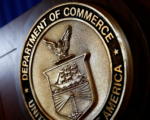Can Starbucks Fix Long Lines at Its Airport Cafes?

Airports have become notorious for long lines, especially at Starbucks locations, where travelers face delays in their quest for coffee, snacks, and caffeine boosts before flights. In places like New York’s LaGuardia Airport, customers have reported wait times of up to 10 minutes for coffee, a stark contrast to the much quicker service they experience at non-airport Starbucks.
Starbucks’ new CEO, Brian Niccol, previously from Chipotle, has acknowledged the growing challenge of airport service delays and is committed to revamping the experience. Niccol sees a major opportunity to improve operational efficiency and speed up service in airport cafes, aiming to reduce wait times to four minutes per customer. This is part of his broader strategy to reverse the company’s recent sales decline and enhance customer experience.
During some of the busiest travel days of the year, such as Thanksgiving week, Starbucks’ airport locations will be tested as they manage the influx of travelers. The U.S. Transportation Security Administration (TSA) is expecting record numbers of passengers, which, combined with staffing shortages, could intensify airport congestion, including at food outlets like Starbucks.
Starbucks has faced a series of struggles in recent months, with sales declining for three consecutive quarters through September. U.S. same-store sales fell by 6%, reflecting customer resistance to rising prices and certain promotional efforts. Niccol’s solutions to improve this include simplifying operations, enhancing mobile ordering, and eliminating surcharges for dairy alternatives.
However, the mobile ordering system, introduced in 2022, has not fully solved the issue of airport chaos. With many customers unfamiliar with the Starbucks app or not regularly using it, mobile orders often add to the confusion rather than alleviating the burden of long lines. Improving service times could not only enhance customer satisfaction but also help Starbucks regain lost customers during peak travel periods.
Challenges of Airport Operations
Starbucks’ airport locations face distinct challenges. These cafes are typically operated by third-party licensees, not Starbucks directly. While this model saves the company from the complexities of airport operations, it also means that Starbucks has limited control over staffing and management at these locations. The company receives licensing fees, royalties, and payments for supplying its products, but licensees bear the operational costs.
The coffee chain’s licensing partners, such as HMSHost, Paradies Lagardere, and OTG, are responsible for staffing and managing Starbucks’ airport locations. These arrangements create discrepancies between Starbucks’ high standards and the actual operational reality at the airports. Staffing issues, combined with the unpredictability of customer flow, make it difficult for Starbucks cafes to maintain efficiency, especially during surges in passenger traffic when hundreds of travelers arrive at once.
Technology and Innovation in Airports
Airports have begun implementing technological solutions to address service bottlenecks. Kiosks and ordering tablets are becoming more common, and some airports offer platforms that allow passengers to order food ahead of time. For instance, Dallas Fort Worth International Airport has introduced DFWOrderNow, where customers can place orders through digital kiosks. Starbucks has a similar system that reroutes customers to its app, ensuring familiarity for those who prefer to stick with the brand’s traditional ordering system.
Additionally, airports are experimenting with robotics and automated delivery to speed up service. Tampa International is exploring robotic solutions to increase efficiency, while Fort Worth-based Ampersand is set to open a 24/7 robotic barista at DFW’s Terminal C. Such innovations may help alleviate long wait times, especially during off-peak hours.
Despite these challenges and ongoing efforts to streamline service, Starbucks remains a favorite among travelers. Many still willingly endure long waits due to their loyalty to the brand. As the coffee chain works to address the issues at its airport locations, it may need to balance technological innovations with improved operational strategies to meet the demands of today’s increasingly crowded airports.













